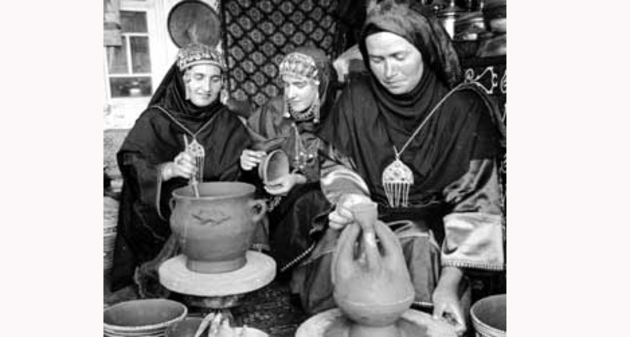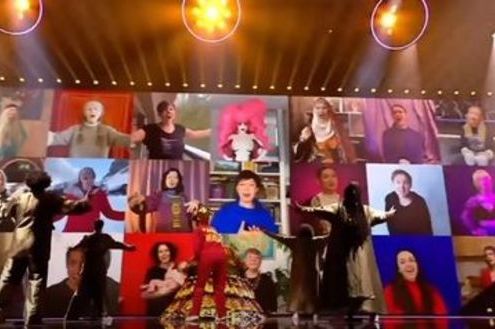By Vestnik Kavkaza, Vesti FM, the History Faculty of MSU
The Lak people are one of the native ethnicities inhabiting the central part of the highlands of Dagestan. The ethnocultural territory of the Laks is called Lakia and consists of the Lakskiy and Kulinskiy Districts, and Lak settlements included in adjacent districts. According to the 2010 census, over 178,000 Laks live in Russia. Laks call themselves “Lak”. Neighbours have different exoethnonyms for them: Avarians call them Tumals, Dargins call them Vulugunis, Lezgins call them Yakhulvis.
They speak the Lak language, which is part of the Nakh–Daghestani language family. There have been several attempts to explain the ethnonym Laks and its origin. Some scientists have pointed out the similarity between the term “Lak” and the name of the classical Legs living in Dagestan in the early Christian era. They saw a similarity between the term and Lekos, the mythical forefather of all Dagestani ethnicities, according to Georgian scriptures.
Laks are followers of Sunni Islam. The Kumukhskaya Juma-Mosque was built in 777-778. Historian A.V. Komarov wrote in 1869: “The Laks, especially the inhabitants of their main settlement Gumuk, were among the first Dagestani tribes to adopt Mohammedanism.” Their social core is the rural community (jamaat). The council of elders would consider complaints and disputes, and set dates for harvesting. The executive power belonged to the elders’ assistant (yalurz).
Traditional farming, mainly the terrace method, was the main occupation of Laks. They were growing wheat, rye, barley, millet, legumes. Men were engaged in plowing, planting, making sheaves. Women were pulling weeds and reaping.
Laks were also developing animal husbandry. Sheep and cattle were moved to winter pastures in Kalmykia. Traditionally, sheep-raising was men’s job, cattle-raising was women’s.
Laks had handicrafts: cloth-making, production of carpets, felt, metal utensils, jewelry, ceramics, golden and silver threads. The Balkhar ceramics (jars for water and butter-making, cups) were mainly made by women. Since the 1960s, clay figures and toys have been made.
Lak food includes fresh and mutton and beef jerky, oatmeal, soured milk, cottage cheese, bryndza, vegetables (onion, garlic, carrot, pumpkin). The traditional meals of many Dagestani peoples were khinkali (toast pieces served with meat and broth), grain and flour porridges, pies and pelmeni filled with cottage cheese, greens and spiced meat. The main drink was buza.
This broadcast was made with the assistance of the History Faculty of MSU and Vestnik Kavkaza
“180 Nationalities – One Country.” Impartially on the peoples of the North Caucasus and the Caucasian peoples of Russia in a live broadcastBy Vestnik Kavkaza, Vesti FM, the History Faculty of MSUThe Lak people are one of the native ethnicities inhabiting the central part of the highlands of Dagestan. The ethnocultural territory of the Laks is called Lakia and consists of the Lakskiy and Kulinskiy Districts, and Lak settlements included in adjacent districts. According to the 2010 census, over 178,000 Laks live in Russia. Laks call themselves “Lak”. Neighbours have different exoethnonyms for them: Avarians call them Tumals, Dargins call them Vulugunis, Lezgins call them Yakhulvis.They speak the Lak language, which is part of the Nakh–Daghestani language family. There have been several attempts to explain the ethnonym Laks and its origin. Some scientists have pointed out the similarity between the term “Lak” and the name of the classical Legs living in Dagestan in the early Christian era. They saw a similarity between the term and Lekos, the mythical forefather of all Dagestani ethnicities, according to Georgian scriptures.Laks are followers of Sunni Islam. The Kumukhskaya Juma-Mosque was built in 777-778. Historian A.V. Komarov wrote in 1869: “The Laks, especially the inhabitants of their main settlement Gumuk, were among the first Dagestani tribes to adopt Mohammedanism.” Their social core is the rural community (jamaat). The council of elders would consider complaints and disputes, and set dates for harvesting. The executive power belonged to the elders’ assistant (yalurz).Traditional farming, mainly the terrace method, was the main occupation of Laks. They were growing wheat, rye, barley, millet, legumes. Men were engaged in plowing, planting, making sheaves. Women were pulling weeds and reaping.Laks were also developing animal husbandry. Sheep and cattle were moved to winter pastures in Kalmykia. Traditionally, sheep-raising was men’s job, cattle-raising was women’s.Laks had handicrafts: cloth-making, production of carpets, felt, metal utensils, jewelry, ceramics, golden and silver threads. The Balkhar ceramics (jars for water and butter-making, cups) were mainly made by women. Since the 1960s, clay figures and toys have been made.Lak food includes fresh and mutton and beef jerky, oatmeal, soured milk, cottage cheese, bryndza, vegetables (onion, garlic, carrot, pumpkin). The traditional meals of many Dagestani peoples were khinkali (toast pieces served with meat and broth), grain and flour porridges, pies and pelmeni filled with cottage cheese, greens and spiced meat. The main drink was buza.This broadcast was made with the assistance of the History Faculty of MSU and Vestnik Kavka





